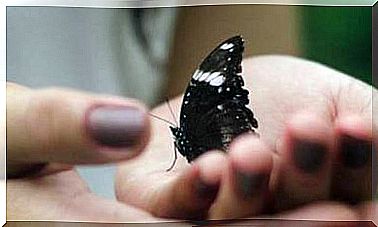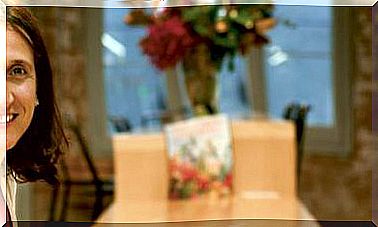Turn Your Beliefs Around: If You Don’t Believe It, You Won’t See It
‘If I don’t see it, I don’t believe it’, we say before some extraordinary achievement. But for it to be true, someone previously formulated it the other way around: ‘If I don’t believe it, I don’t see it.’

It has been fifty years since that July 20, 1969, when the famous American astronaut Neil Armstrong became the first human being to set foot on the lunar surface, a feat followed by hundreds of millions of people around the world. It is not difficult to imagine that, when seeing that first step of man on the moon live, in many homes the phrase would be heard: “if I don’t see it, I don’t believe it!”.
We have all heard or uttered this expression of skepticism. gives us a very clear idea : only when we have been able to see how Armstrong descends from Apollo 11 and steps on the moon, only when we have heard him say that of: “this is a small step for man, but a great leap for humanity” , only when ultimately we were able to experiment with our senses the event, we will believe him.
But if we turn that expression around and formulate it as “If I don’t believe it, I don’t see it”, we will see that the initial skepticism turns into a plea in favor of trust, illusion and credulity.
That is to say: for millions of people to believe that man could step on the moon, they needed to see how Armstrong did it, but for him to achieve it, it was necessary for many people to previously believe that it was possible to achieve what seemed like science fiction.
Imagination builds possible worlds
As writer George Bernard Shaw once said: “You look at things and ask yourself ‘why?’ I dream of things that never were and I ask myself, ‘why not?’ ”.
What is this enthusiasm, capable of moving mountains? Referring to that vital confidence and optimism that impels the human being in pursuit of his dreams, the Irish novelist John Whelan wrote: “There is only one admirable form of imagination: that imagination that is so intense that it creates a new reality, that makes things happen ”.
This is what this enthusiasm consists of, in a trust and “faith” so unconditional in our purposes that they will end up transforming the imaginable into the real. That is the force that manages to materialize the dreams we have. Imagination, faith and trust chart the way to see our wishes come true.
That is the imagination that led Thomas Alva Edison to create the electric light bulb or Jacques Cousteau, the first scuba with which he would enter the deep world of the oceans to marvel at its hidden secrets.
And it is also the imagination that each of us needs to conquer their personal dreams. Because whatever we set out to do – climb the fourteen eight thousand of the planet, like the mountaineer Carlos Soria, who started after the age of sixty-five and now, with seventy-two completed, begins the ascent to one of the four mountains that are missing; or do a bit of sport to be healthier – to achieve this you need an essential requirement: firmly believe in it.
Without this imagination, without this “faith”, without this confidence and illusion, it is difficult for us to reach, not just the fourteen eight thousand on the planet but the fourteen steps that separate the landing of our farm from the elevator.
How do your ideas limit you?
¿ What prevents us to advance properly and hampers us in our particular Himalayan ascent? What prevents us from reaching the moon?
Simply, looking at the world through the wrong lenses, maintaining self-limiting and demotivating beliefs that, far from stimulating us to act, leave us lethargic and paralyze us.
The secret is not to identify with ideas that hurt us. If one day we could not, today we will try again.
It is a series of thoughts that lead us to lose much of that enthusiasm and confidence that we had as children, of that overflowing illusion with which we faced any challenge that came our way, an illusion without which we would not have been able to learn to reading, writing, swimming, or cycling …
And what is the reason why we have been losing this enviable vitalist attitude? Identification with the belief “I can’t.” Believing that we will not be able to do so, we boycott ourselves over and over again.
On a certain occasion, I heard that there are some aquarium fish that grow depending on the size of the tank in which they live, so that they are small if they are placed in a small fish tank, like those round and glass ones. However, if you choose to leave them in an aquarium, the fish themselves increase in size, their fins grow and the colors become brighter.
It is an image to illustrate what the beliefs we have of ourselves do with our potentialities: we end up transforming ourselves into what we think of ourselves. This is why having a good belief system is so important.
How can we modify and improve our belief system?
For this there is a golden rule that is essential to apply wisely. It is about the ability of our thinking to stop identifying ourselves, to recognize that our beliefs are perception schemes through which we look at the world, others and ourselves, but they are not reality, they are simply our way of perceiving reality.
Imagine that you get up to go to work and suddenly, when you open your eyes, you discover that you see everything with a somewhat brown color. At first you do not know what happens, but finally you realize that you are wearing very particular sunglasses, invisible glasses that you cannot take off.
You leave the house, you take the car and you go to your work. When you reach a traffic light you cannot distinguish the colors, but remember that red is the color above, amber is the one in the center, and green is the one below, so more than trusting the colors you see, you trust in what you already know.
You keep driving and you realize that, as you trust more in what you know – the place that colors occupy in the traffic light – and not in what you really see – brown tones of different intensity -, little by little, you perceive new the colors red and green.
You have been able – thanks to not identifying with your invisible glasses and to trust what you already know – to regain your vision.
Reading the previous metaphor could lead us to think that we already have the clue to know where to start: by paying attention to our self-limiting thoughts and beliefs, especially those referred, as we pointed out previously, to ourselves, to self-concept.
An exercise to encourage your inner child
Now, use your imagination for a moment. Think of a child of a few years, a child who is beginning to read. Imagine that you are at home with your favorite book in your hands, about to read your first word, following with your finger the syllables that compose it so as not to get lost, gesturing exaggeratedly with your mouth due to the difficulty of articulating the letters: “ the car”.
- While the little one reads, imagine that you, next to him, with your mouth close to one of his ears, you are whispering: “It is very difficult, it is not worth trying, you are not good for this, it will cost you a lot, they will laugh at you when they hear you read ”.
- Now imagine that you change your attitude. still sitting beside him, hearing him read, and when the child stops or gets stuck in a word, you tell him softly: “Well, you’ll see how slowly you get it , you’re very brave trying, eventually you You will be glad to have persisted in your efforts ”.
Every time you propose something to yourself in this life, you are the child and you can decide how to speak to yourself.
The psychiatrist Eric Berne said: “We are all born princes and princesses, but over time we have been transformed into toads.” You can treat yourself like the prince or the princess, the child you were, or like the toad, whatever you think you are. The most important thing is that you never forget that the magician who breaks the enchantment is yourself.
Psychologist William James once wrote: “The greatest discovery of my generation is that a human being can change his life by changing his mental attitude.”
If we review our paradigm of thought and manage to conquer our mind, if we manage to make it forged with these empowering and not self-limiting beliefs, it can become our best friend. And if we try?









